BEYOND: A Guide
Join in city-wide activities to honor community and memorialize the victims of Tucson’s Congress on Your Corner shootings on Jan. 8, 2011.
In its third year, BEYOND is settling into a tradition as an active memorial bringing Tucsonans together to Commemorate, Celebrate, and Commit as a brighter, unified community. Here’s your guide to making the most of the events spread across the city on Saturday, Jan. 11.
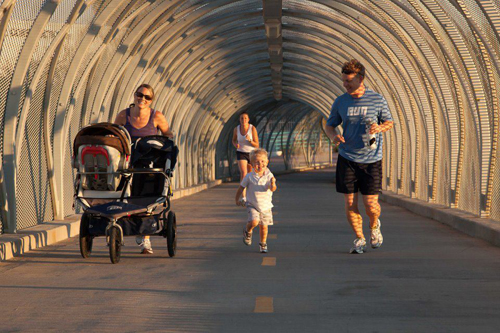
BEYOND Tucson offers a variety of activities for all Tucsonans.
photo courtesy BEYOND Tucson
For those who want to get out of town and into the mountains, there’s a variety of activities and hikes on the wild perimeters. Starting at Sentinal Peak, volunteers will pull buffelgrass from “A Mountain,” which was a favorite run of Gabe Zimmerman’s, the Rep. Gabrielle Giffords’ staff member who lost his life Jan. 8, 2011. The firefighters at Sentinel Peak Brewing will be giving their thanks in the form of beer samples from their new nano brewery. There’s also guided hikes departing from the Wild Burro trailhead in the Tortolita Mountains, at Marana’s 14810 N. Secret Springs Dr.; and from Sabino Canyon, where parking fees will be waived and programs will engage folks of all ages. In addition, hikers, bikers and horseback riders can convene at the Gabe Zimmerman Davidson Canyon trailhead south of the Rincon Mountains, off of Highway 83.
 For the competitive, there’s the Colossal Du, a rugged run-bike-run in Colossal Cave Mountain Park, 16721 E. Old Spanish Trail. The park will throw its own festivities, with free Discovery Tours and an archaeology hike of Hohokam sites. Across town, a 5-mile social run will show off the scenery at Saguaro National Park West, 2700 N. Kinney Rd.
For the competitive, there’s the Colossal Du, a rugged run-bike-run in Colossal Cave Mountain Park, 16721 E. Old Spanish Trail. The park will throw its own festivities, with free Discovery Tours and an archaeology hike of Hohokam sites. Across town, a 5-mile social run will show off the scenery at Saguaro National Park West, 2700 N. Kinney Rd.
For the playful, the new Sporting Chance Center – 2100 W. Curtis Rd. – joins the lineup of BEYOND events with basketball, volleyball and futsal games in their 40,000 square foot court facility. The center, which hosts youth sports teams throughout the year, is situated right near the River Walk at La Cholla Boulevard, and guided walks will leave the facility for those who want some fresh air.
For the imaginative, Valley of the Moon – 2544 E. Allen Rd. – returns with a storytelling day in Tucson’s historic fairyland. At the Christina Taylor-Green Memorial Park, at the corner of Shannon and Magee Roads, the Stroll and Roll will bring together all ages with sidewalk chalk to decorate the route and dogs to meet from Gabriel’s Angels, a pet therapy organization for at-risk kids.
For the south side community, BEYOND In Your Neighborhood is a new walk to link up the Sunnyside neighborhood, starting at Habitat for Humanity’s Santa Maria site, 944 W. Santa Maria St. Neighbors will meet and greet, create recycled art and enjoy a group lunch.
And for the social, the Main Event in Armory Park, 221 S. 6th Ave., draws thousands of visitors to dance, ride bikes, rock climb and visit health and wellness stations sponsored by Tucson Medical Center. The Living Streets Alliance Kidical Mass will escort families on a safe and fun biking route through the Old Barrio. Meet Me At Armory Park will be a four-mile walk/run to show off parts of Downtown, 4th Avenue and the Rattlesnake Bridge. The Children’s Museum, 200 S. 6th Ave., is free during BEYOND, and last year drew in a record number of 4,000 visitors.
BEYOND has become an amazing explosion of options to enjoy the Tucson community that lasts longer than a single day.
“One goal of Beyond is to get people out with their families and doing something healthy,” says BEYOND Project Manager Michelle Crow, “but another goal is to connect people to the ongoing resources in their communities.” It’s a bond that opens up the community every year to commemorate, celebrate, and reaffirm our commitment to each other.
BEYOND is January 11, 2014 and all the details on its events are at Beyond-Tucson.org.


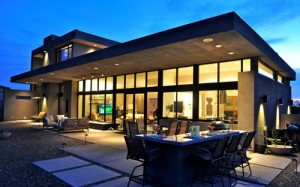
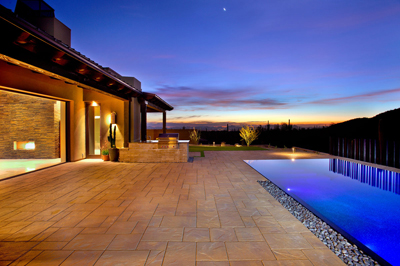
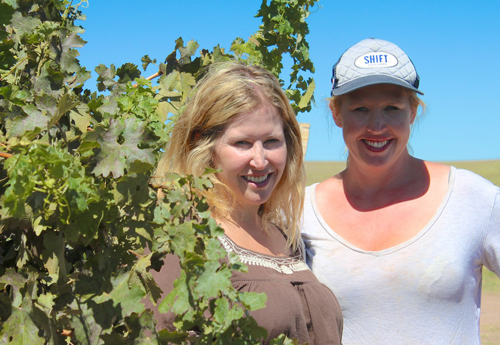
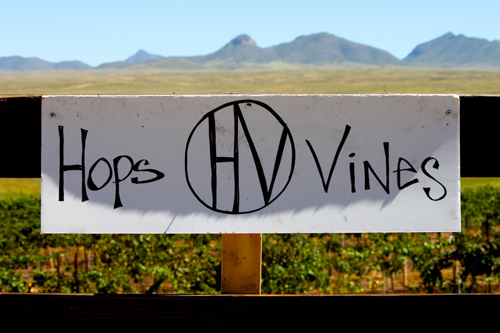

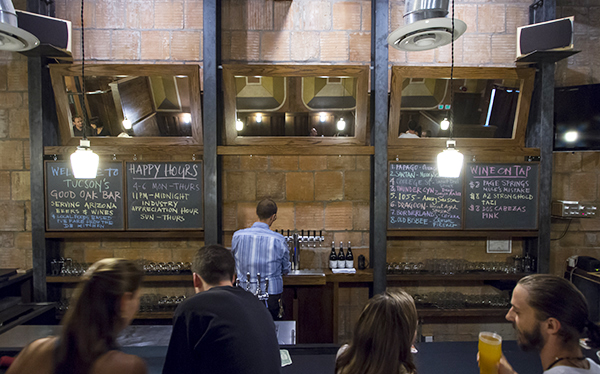
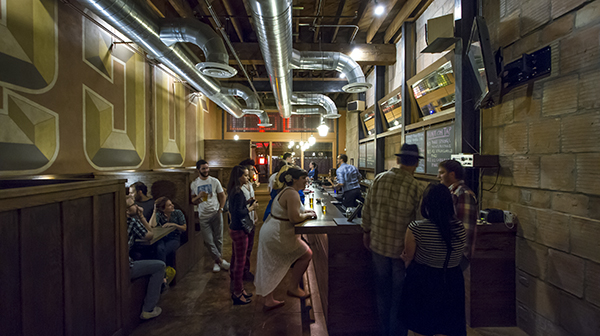
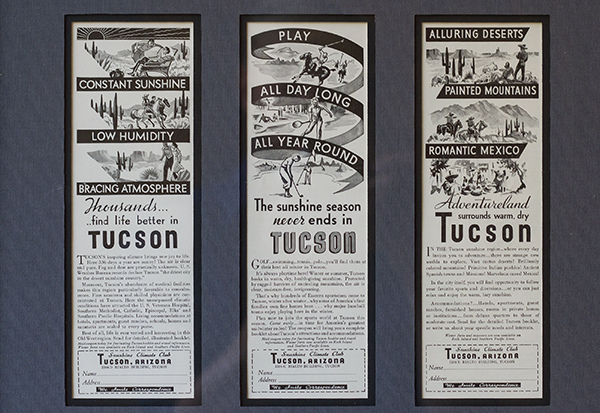
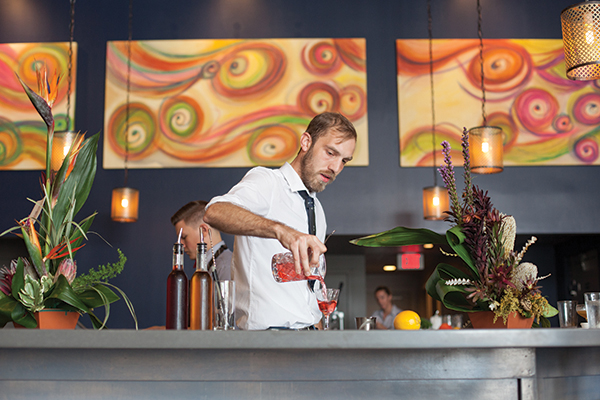
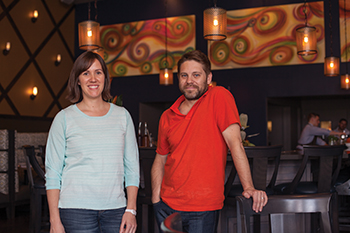 Against the dark walls of the rum house, Morales’ bright canvas colorfully pops in the light with yellow, magenta, green and purple hues. In a unique artistic twist, the mural is done in watercolor, a medium normally reserved for fine paper, but in Saint House, Morales has splashed it across his gesso-primed board.
Against the dark walls of the rum house, Morales’ bright canvas colorfully pops in the light with yellow, magenta, green and purple hues. In a unique artistic twist, the mural is done in watercolor, a medium normally reserved for fine paper, but in Saint House, Morales has splashed it across his gesso-primed board.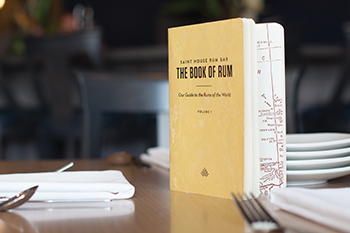 Rum is constantly pegged as sweet and syrupy – not surprising with its foundation in sugarcane – but as Saint House proves, there are styles and flavors from all over the world to be explored. On every table sits a little yellow chapbook titled The Book of Rum, and in it 17 countries are represented: from Brazil to Java with many islands in between.
Rum is constantly pegged as sweet and syrupy – not surprising with its foundation in sugarcane – but as Saint House proves, there are styles and flavors from all over the world to be explored. On every table sits a little yellow chapbook titled The Book of Rum, and in it 17 countries are represented: from Brazil to Java with many islands in between.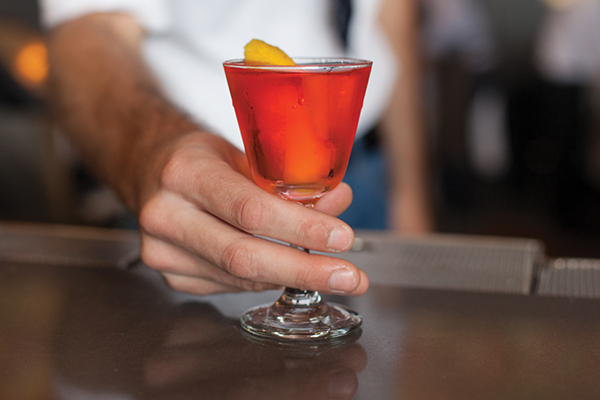
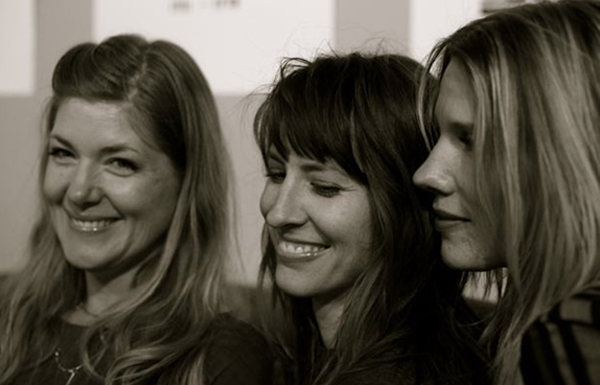

 If you’ve been daydreaming about spending more time in the open air exploring our city – and less time trapped in your car – each April a group of people is giving you every possible incentive to take over the streets and celebrate public space. Living Streets Alliance fills the month of April with Bike Fest, bookended this year with Cyclovia, two all-day festivals of car-free streets downtown on April 7th, and midtown on April 28th.
If you’ve been daydreaming about spending more time in the open air exploring our city – and less time trapped in your car – each April a group of people is giving you every possible incentive to take over the streets and celebrate public space. Living Streets Alliance fills the month of April with Bike Fest, bookended this year with Cyclovia, two all-day festivals of car-free streets downtown on April 7th, and midtown on April 28th. The Sunshine Mile revival started with a tour: last November, Demion Clinco from Tucson Historic Preservation Foundation found himself on Broadway Boulevard, organizing talks for the inaugural Modernist Week on the mid-Century modern architecture that populates a particular corridor of the boulevard. It was a spark of history that’s now revitalizing the business district. “This section of Broadway between Euclid and Country Club was born modern,” Clinco begins. The decades after World War II saw both an explosion in Tucson’s population and the birth of the Modernist era; the economy traveled east from downtown, using Broadway as its main thoroughfare and prominent, innovative architects in its construction. Now even in the midst of contemporary buck-saving commercial architecture, we’ve been left with so many modernist gems that the Arizona Preservation Foundation added the Sunshine Mile to its list of endangered historical places. They’re in danger of being forgotten and potentially erased by a long-standing proposal to widen the street and tear down encroaching buildings on its north side.
The Sunshine Mile revival started with a tour: last November, Demion Clinco from Tucson Historic Preservation Foundation found himself on Broadway Boulevard, organizing talks for the inaugural Modernist Week on the mid-Century modern architecture that populates a particular corridor of the boulevard. It was a spark of history that’s now revitalizing the business district. “This section of Broadway between Euclid and Country Club was born modern,” Clinco begins. The decades after World War II saw both an explosion in Tucson’s population and the birth of the Modernist era; the economy traveled east from downtown, using Broadway as its main thoroughfare and prominent, innovative architects in its construction. Now even in the midst of contemporary buck-saving commercial architecture, we’ve been left with so many modernist gems that the Arizona Preservation Foundation added the Sunshine Mile to its list of endangered historical places. They’re in danger of being forgotten and potentially erased by a long-standing proposal to widen the street and tear down encroaching buildings on its north side.
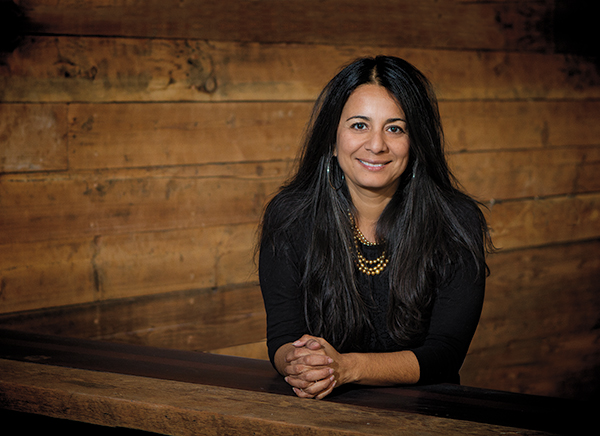





Also find us on...